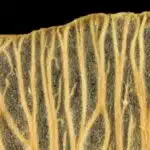Dusty Miller (Silver Dust) is a popular garden flower that has been around for centuries. In fact, more than 350 species of the plant have been recorded in the wild! It’s easy to see why this perennial favorite has remained so popular. Growing and caring for this plant is relatively simple, and yet the results are stunning. With its distinctive silver foliage and bright yellow flowers, it adds a touch of pizzazz to any garden.
In this article, we’ll discuss how to successfully grow and care for your Dusty Miller (Silver Dust). We’ll cover everything from choosing an ideal location to pruning techniques. Whether you’re a novice gardener or an experienced professional, our tips will help ensure your plants stay healthy and beautiful all season long.
Finally, we’ll provide some helpful advice on common problems such as pests and diseases. With the right knowledge and dedication, you can keep your Dusty Miller (Silver Dust) looking its best year after year! So let’s dive in and learn how to give your plants the attention they deserve.
Overview Of Dusty Miller (Silver Dust)
The sight of Dusty Miller is truly a beautiful one. Its silvery-grey foliage, with its fringed edges and light dusting of white color, gives an ethereal glow to any garden or landscape. It’s a plant that’s sure to draw the eye and add a touch of classiness to any outdoor area. With proper care, it can thrive in full sun or partial shade in USDA zones 9-11.
When it comes to care, this low-maintenance perennial does best when planted in well-draining soil enriched with organic matter such as compost or aged manure. Water your dusty miller regularly during its first season, then cut back on irrigation once the roots have become established. In winter months, make sure to keep the soil slightly moist rather than letting it dry out completely between waterings.
Fertilizing your dusty miller every spring will help promote healthy growth and flowering throughout the season. Be sure to use a balanced fertilizer or slow release fertilizer specifically designed for perennials like dusty miller for best results. With a bit of TLC you’ll be rewarded with lush foliage that will provide texture and interest throughout the growing season.
Where To Plant Dusty Miller
Dusty Miller (Silver Dust) is a stunning, low-growing annual that adds texture and interest to any garden. With its soft silver foliage and white flowers, it’s an essential component of any flower bed. Whether you’re planting in containers or directly in the ground, there are a few key things to keep in mind when planting this unique plant.
First off, choose an area with plenty of sunlight. When planted in full sun, dusty miller will grow up to 10 inches tall with a spread of 12 – 14 inches. On the other hand, if planted in partial shade it will remain shorter and more compact at about 3 – 5 inches tall. It’s important to note that direct afternoon sunlight can cause the leaves to scorch so be sure your chosen location is sheltered and receives morning light only.
When choosing a spot for your dusty miller here are 4 key factors to consider:
- The amount of sunlight your plant will receive;
- Its size and how it fits into your landscape;
- The type of soil you have;
- Your climate zone and growing season.
Keep in mind that dusty miller does not tolerate extreme temperatures so if you live in a hot or cold region make sure you choose an area that has some protection from the elements. Additionally, when planting directly into soil be sure to provide good drainage as waterlogged soils can cause root rot which can lead to death of the plant. With these things in mind, you’re sure to have success growing dusty miller!
Soil Requirements For Dusty Miller
Dusty Miller, also known as Silver Dust, is an ornamental plant that can be a beautiful addition to any garden. For optimal growth and care of the plant, it is important to understand the soil requirements for successful cultivation.
The ideal soil for Dusty Miller should be light and well-draining, yet still able to retain enough moisture to keep the roots from drying out. Sandy loam soils are best suited for healthy growth of this plant because they contain a balance of sand and silt particles with organic matter. A slightly acidic pH level between 5.5 and 6.5 is preferred by this species, although they can tolerate a slightly wider range.
It is essential to ensure that the soil remains slightly moist without becoming waterlogged or overly dry throughout the growing season and during periods of dormancy in winter. Adding compost or other organic matter will help improve aeration in heavier clay soils and increase water retention in sandy soils. Applying mulch around the base of the plants will also help keep them cool, conserve moisture, and reduce weed growth in the area.
By providing these ideal conditions with proper soil requirements, you can ensure that your Dusty Miller grows into a healthy and robust addition to your garden!
Sunlight Requirements For Dusty Miller
Sunlight requirements are an important part of caring for dusty miller plants. This trailing, silver-leafed foliage plant needs 4 to 6 hours of direct sunlight in order to thrive and produce the best possible coloration. Too little sunlight will result in the leaves losing their silvery sheen, becoming more greenish in hue. Furthermore, when dusty miller plants don’t receive enough sunlight, they can become leggy and sparse.
On the other hand, too much sunlight can cause sunburn on dusty miller’s delicate leaves which will turn them yellow or brown. When planting your dusty miller outdoors, it’s important to find a spot that gets bright light but isn’t too exposed to direct sunlight during midday when the sun is hottest. If you’re growing your dusty miller indoors, place it near a south or west-facing window for optimal lighting.
By providing enough light for your dusty miller plants you’ll be rewarded with lush foliage that stays healthy and vibrant all season long! Now that we’ve discussed the ideal lighting conditions for growing this beautiful plant, let’s move onto watering requirements for its continued success.
Watering Requirements For Dusty Miller
Watering requirements are important for the successful cultivation of dusty miller. This plant is native to Mediterranean Europe and, as such, grows best in conditions that mimic its natural environment. As a drought-tolerant perennial, it requires only minimal watering once established; however, during dry periods or establishment of new plants, additional watering may be necessary.
When watering dusty miller, it’s best to apply water directly to the soil rather than from overhead. This helps keep foliage dry and minimizes the risk of fungal diseases. Additionally, allowing the soil to dry out between waterings is key for this species. Overwatering can lead to root rot and other health issues. It’s important to remember that container-grown plants will require more frequent watering than those planted in garden beds.
In summary, if you’re growing dusty miller in your garden or containers, make sure you provide adequate but not excessive water for success. To ensure optimum health of your plants, avoid overhead watering and allow the soil surface to dry out between waterings. With proper care and attention, you’ll have healthy plants with silver-tinged foliage that adds unique texture and contrast to your garden landscape! Now let’s look at fertilizer requirements for dusty miller…
Fertilizer Requirements For Dusty Miller
It may be tempting to believe that dusty miller (silver dust) is a low-maintenance plant and doesn’t require much in the way of fertilizer. However, this isn’t necessarily true. Proper fertilizing is an important part of keeping your dusty miller healthy and happy. As an experienced botanist and gardener, I’m here to tell you when, how, and why to fertilize your dusty miller for optimal growth.
Knowing when to fertilize your dusty miller is the first step in proper care. Dusty millers are generally slow growing plants, so they don’t need very frequent fertilizer applications. A once-a-year application of balanced fertilizer should be enough for most situations. For best results, apply a slow release fertilizer in early spring when the plants start actively growing again after winter dormancy. This will give them all the nutrients they need for the growing season ahead.
How you apply the fertilizer is also important. Be sure to follow package directions carefully, as too much or too little can harm your plant’s health. When applying granular fertilizer, spread it around the base of each plant but avoid getting any on their leaves as this can cause burning or discoloration. If you’re using a liquid fertilizer, use a hose end sprayer set to half-strength and spray both sides of each leaf evenly until they are lightly coated with solution but not dripping wet.
By taking the time to properly fertilize your dusty millers once a year in early spring, you can ensure that they stay healthy and strong all season long!
Pruning Dusty Miller
Pruning is an important part of caring for dusty miller. Pruning helps to keep the plant compact and to promote bushier growth, which helps create a more attractive display in the garden. Pruning also serves to remove dead or damaged foliage, allowing for more air circulation and reducing the chance of disease.
To prune dusty miller, first use sharp pruners or scissors to snip off any dead foliage at its base. Then, cut back the stems of the plant so that they are about half their original length. This will encourage more branching and should be done when the plant is actively growing in late spring or early summer. It’s best to avoid cutting back in late summer as this could reduce flowering potential for next year’s blooms.
Finally, it’s important not to over-prune dusty miller as this can lead to reduced flowering or sparse foliage. Pruning should be done with caution; always remove only as much as necessary and don’t hesitate to leave some branches if they look healthy and strong. With proper pruning techniques, you can help your dusty miller look its best in your garden!
Propagating Dusty Miller
Propagating dusty miller is an excellent way to create new plants from existing ones. It’s a straightforward process that doesn’t require many tools, and it can be done from either cuttings or seeds. Here are some important tips for propagating your own dusty miller:
• Take cuttings from healthy stems in the spring or summer and place them in moist soil mix. • Start seeds indoors, then transplant them outside when the weather warms up. • Use rooting hormone to help encourage root formation on your cuttings. • Keep the soil damp but not soggy while the cuttings are establishing themselves.
Once you’ve propagated your dusty miller successfully, you’ll want to make sure they’re properly cared for to ensure their health and longevity. Be sure to provide plenty of sunlight, give them regular waterings, and fertilize them once a month during the growing season. With proper care, these plants will reward you with beautiful silver foliage for years to come.
Now that we’ve covered how to propagate dusty miller, let’s take a look at controlling insects and disease on these plants.
Controlling Insects And Disease On Dusty Miller
Have you ever wondered how to keep your dusty miller healthy and pest free? This article will provide an overview of controlling insects and disease on your dusty miller plant.
First, let’s discuss the most common insect pests that attack dusty millers. Aphids, spider mites, and whiteflies are among the most destructive insects that feed on dusty miller foliage. Fortunately, these pests can be controlled with regular applications of neem oil or insecticidal soaps. Be sure to follow label directions when applying any type of pesticide to your plants.
Next, let’s talk about preventing and treating diseases in your dusty miller plants. The most common diseases affecting dusty millers include powdery mildew, rust, and root rot. To prevent these diseases from occurring in the first place, it is important to keep the dust off of the leaves by watering early in the morning and not overwatering them. If these measures don’t work, fungicides may need to be used to treat infected plants. Again, always follow label instructions when applying any type of pesticide or fungicide to your plants.
Finally, it is important to inspect your plants regularly for signs of damage from insect pests or disease. Early detection is key in preventing further damage or spread of infection throughout your garden. With just a little bit of care and attention, you can ensure that your dusty millers stay healthy and vibrant all season long!
Winter Care For Dusty Miller
Finally, let’s discuss winter care for dusty miller. With its delicate silver foliage, this plant is often used as an ornamental addition to gardens and landscapes in temperate climates. However, while they are generally hardy, they need extra protection in winter if you want them to survive the cold weather. Here’s how to do it!
Firstly, begin preparing your dusty miller plants for winter by trimming away any dead or damaged foliage. This will help ensure the remaining leaves are healthy and undamaged before the cold weather sets in. Additionally, make sure your plants have enough water during the fall months; however, try not to overwater them as this can cause rot and disease.
The most important part of winter care for dusty millers is providing a protective covering for the plants once temperatures start to drop below freezing. To do this, use a layer of mulch or straw around each plant to insulate it from the cold air. If temperatures remain below freezing for extended periods of time, consider covering your plants with a lightweight frost cloth or blankets for added insulation. This will help protect them against extreme temperatures and keep them alive through the winter months.
By following these simple steps, you can ensure that your dusty millers stay healthy and beautiful year-round! So don’t forget – with a little extra attention during the colder months, you can give this lovely plant a fighting chance against even the harshest winters!
Containers For Dusty Miller
Bringing a touch of sparkle to your garden, the silver-hued dusty miller is an eye-catching foliage plant that can provide a bit of magic to any outdoor space. But it’s not just its appearance that makes it so alluring; this hardy perennial also has a few tricks up its sleeve when it comes to container gardening. Let’s explore how you can make the most of this enchanting plant with containers for dusty miller.
First, let’s consider the basics: containers for dusty miller should be deep enough to accommodate the plant’s roots and wide enough to give room for growth. A pot with drainage holes is essential, as too much water can quickly lead to root rot – and no one wants that! Clay pots are great for breathability and allowing excess moisture to escape, but you can also opt for plastic containers if you’d prefer something lightweight and durable.
Next up is soil choice; well-draining potting mix is key, so look out for mixes specifically designed for container planting. One last point on soil: if your area experiences heavy rainfall or regular flooding, opting for a raised bed may be a good move – keeping your dusty miller safe and sound even in wet conditions!
With these considerations in mind, you’re now ready to start thinking about companion planting options – finding other plants that will thrive alongside your dusty miller in its new home.
Companion Planting For Dusty Miller
Companion planting is an important part of growing dusty miller (silver dust). It involves strategically placing certain plants together in order to create a balanced ecosystem that supports the health and growth of all plants. This helps to ensure that there are no nutrient deficiencies, pest infestations, or overcrowding. When it comes to companion planting for dusty miller, there are a few key plants that should be kept in mind.
First, consider other silver-leaved plants such as artemesia, wormwood, and lamb’s ears. These can work well as companions for dusty miller since they have similar light requirements and tend to make a good contrast with the silvery foliage. Next, look for flowers or herbs that don’t require much maintenance and are able to tolerate partial shade. Lavender, rosemary, and chamomile are all great companions for dusty miller because they will help to attract pollinators while also providing additional texture and color in the garden. Lastly, vegetables such as lettuces, onions, and peppers can be planted near dusty miller as long as they get enough light.
Overall, companion planting is an effective way to create a healthy environment for your dusty miller plants while adding visual interest to your garden. By selecting companion plants carefully based on their light requirements and maintenance needs you can ensure that your silver dust will thrive in its new home! With the right combination of companion plants nearby, your dusty miller will have everything it needs to flourish!
Harvesting Dusty Miller
Gathering the garden’s glorious greenery, harvesting dusty miller is an essential step for any gardener. As a specialist in botany and gardening, I’m here to provide the information you need to understand this process. With proper pruning practices and understanding of the perennial plant’s needs, harvesting dusty miller can be done with ease and efficiency.
First off, it’s important to know when it’s time to harvest dusty miller. Typically, gardeners should wait until the plant has at least two sets of leaves before cutting them off close to the base of the stem. As a rule of thumb, avoid cutting off more than a third of the plant – this will help ensure healthy regrowth later on. In addition, be sure to use clean scissors or shears when harvesting dusty miller so as not to introduce bacteria or fungi into the plant.
When collecting your clippings, store them in a glass jar in a cool dark place until you’re ready to use them. It’s also important that you pick off any wilted or dead leaves from your plant after harvesting; doing so will promote new growth and keep your dusty miller looking its best.
By following these steps, you’ll have no trouble getting started with harvesting dusty miller in your own garden! With just a bit of knowledge and practice under your belt, you’ll feel confident knowing exactly how to care for this beautiful perennial flower in order to make it thrive year-round!
Uses For Dusty Miller
Dusty Miller, also known as Silver Dust, is an extremely versatile plant used by gardeners and florists alike. It’s a widely loved annual that can be used in a variety of ways such as bedding plants, cut flowers, and even container gardens. According to research conducted by the University of Minnesota Extension, over 70% of plant enthusiasts have some form of dusty miller in their home gardens or outdoor landscapes.
Harvesting dusty miller is relatively easy and can be done at any stage throughout its growth cycle. But once harvested, there are plenty of uses for this beautiful plant. Dusty miller is often used as a garnish in floral arrangements due to its silvery foliage that stands out from other blooms. Additionally, it makes an attractive edging on flower beds or pathways and can be combined with other annuals for eye-catching displays. It’s even becoming increasingly popular in container gardening- either alone or paired with other annuals like petunias or marigolds.
Apart from being aesthetically pleasing, dusty miller is also quite low maintenance and requires minimal care once established. With proper planting and positioning in well-drained soil, this plant will thrive with just a bit of regular watering and occasional fertilizing during hot summer months. As such, it’s no wonder why it’s become a favorite among gardeners looking to cultivate showstopping displays while putting forth minimal effort!
Troubleshooting Problems With Dusty Miller
While it may appear that dusty miller (silver dust) is a low-maintenance, easy to grow plant, sometimes it can run into issues. Troubleshooting problems with dusty miller is an important part of keeping the plant healthy and long-living. Here are some ideas on how to identify and manage any issues:
First, check for signs of disease or pests. Dusty miller is especially prone to fungal diseases like powdery mildew and rust, so watch for discoloration or spots on the leaves. Inspect for bugs as well; dusty miller can be attacked by aphids, mealybugs, mites, and whiteflies.
Second, ensure the plant is getting enough water. Watering every 2-3 days should be sufficient depending on the weather conditions. If you notice wilting or yellowing leaves, it may mean you need to water more often. On the flip side, overwatering can cause root rot so make sure not to overdo it!
Thirdly, keep an eye out for nutrient deficiencies. The soil should be high in nitrogen and phosphorus because these are essential nutrients for healthy foliage growth. If you notice pale green or yellow leaves instead of rich green coloration then supplementing your soil with fertilizer may help improve the health of your plant.
Finally, provide enough light exposure but avoid direct sun as this could burn the delicate leaves. A south facing window with a sheer curtain provides adequate brightness without too much heat or intensity that could damage your dusty miller’s foliage. With these tips in mind, you should be able to keep your plant looking its best!
Frequently Asked Questions
How Often Should I Prune My Dusty Miller?
The beauty of dusty miller is its striking silver foliage, and as such, it’s important to keep the shrub trimmed to maintain its shape and fullness. Pruning should be done on a regular basis – around once or twice a year – in order to ensure the plant remains healthy and lush. It’s like giving your dusty miller a well-deserved makeover so that you can enjoy that silvery shine all season long!
When pruning, use sharp shears to trim away any dead or diseased branches at the base of the plant. Then cut back any stems that have grown too long by up to one-third. This will help encourage new growth and maintain a rounded shape. Additionally, removing some of the older leaves can help promote better health for the entire shrub. Think of it as giving your dusty miller a much needed breath of fresh air!
So remember: when caring for your dusty miller, regular pruning is key for keeping it vibrant and healthy. With each trimming session, you’ll be rewarded with a beautiful display of silvery foliage that will light up any garden bed or container. As Aristotle famously said: “We are what we repeatedly do; excellence then is not an act but a habit” – and so it goes with tending your prized dusty miller!
Is Dusty Miller Drought Tolerant?
Dusty Miller, also known as Silver Dust, is a popular garden plant that can easily be grown in almost any location. This robust little plant has an attractive, silver-gray foliage which makes it stand out from other plants. But what about its drought tolerance? Let’s take a closer look and find out.
Surprisingly, dusty miller is actually quite drought tolerant. Its ability to handle dry conditions is due to the thick coating of hairs that cover its leaves. These hairs act as a barrier preventing water loss and helping to conserve moisture within the plant. However, this doesn’t mean you can just forget about watering your dusty miller! To ensure it thrives, here are some tips:
• Provide regular watering: Make sure to keep the soil evenly moist but not soggy by providing 1-2 inches of water every 7-10 days during the summer months, or when rainfall is scarce.
• Mulch: Applying a layer of mulch around the base of your dusty miller will help retain moisture in the soil and prevent weeds from growing around it.
• Monitor temperature: Dusty miller does best when temperatures are between 65-75°F (18-24°C). When temperatures drop below 55°F (12°C) for extended periods of time, you may need to provide extra protection for your plants.
So if you’re looking for a low-maintenance plant that can handle drier conditions, then dusty miller might just be perfect for you! With proper care and regular watering, you can enjoy its beautiful foliage in your garden all season long.
What Pests Are Commonly Found On Dusty Miller?
Dusty miller, also known as silver dust, is a popular garden plant due to its striking silver foliage and its ability to thrive in dry conditions. Despite being drought-tolerant, however, the plant can still be vulnerable to pests from time to time. In this article we’ll discuss the common pests found on dusty miller and how best to manage them.
The first pest that you may encounter with your dusty miller are aphids. These small insects suck nutrients out of the plant’s leaves, causing yellowing and wilting. To get rid of aphids, you can use insecticidal soap or neem oil as a natural pesticide. Be sure to spray the undersides of the leaves as well as the tops for maximum effectiveness.
Another pest commonly found on dusty miller is mealybugs. Mealybugs usually appear in clusters and feed off of sugary fluids within the plants’ stems and leaves. The best way to get rid of mealybugs is with an insecticidal soap or horticultural oil spray – both will help kill off adult bugs and eggs without damaging your plant’s foliage.
To keep your dusty millers looking their best, it’s important to check them regularly for any signs of infestation. If you spot any pests early on, you can take swift action before they become too entrenched in your garden or houseplant collection!
Is Dusty Miller Toxic To Pets And Children?
Dusty Miller (Silver Dust) is a popular ornamental plant, but it’s important to know if it’s toxic to pets or children. Fortunately, the answer is no. Dusty Miller is not poisonous and won’t harm your four-legged friends or the little ones in your house.
The plant can be grown in any soil type as long as it has good drainage and adequate moisture, making it an ideal choice for gardens with limited resources. It prefers full sun to partial shade and can tolerate drought conditions without wilting. When caring for dusty miller, it’s important to keep the soil slightly moist, provide regular fertilizer during the growing season and trim away dead foliage regularly.
If you’re looking for a safe, low-maintenance plant that adds texture and color to your garden, then dusty miller could be an excellent addition. Not only will its silvery foliage brighten up any space, but you’ll also be able to rest easy knowing that your family and pets are safe from any toxicity issues associated with this lovely perennial!
Can I Grow Dusty Miller Indoors?
Ah, the dusty miller! It’s a plant that many gardeners have grown to love and admire. But is it possible to grow this stunning silver dust in an indoor environment? Surprisingly, the answer is yes! Though it does best outdoors in cooler climates, with just a few tweaks you can create an environment inside your home that will keep your dusty miller looking healthy and beautiful.
As any specialist botanist or gardener will tell you, the key to successful indoor growth of a dusty miller is understanding its needs. First off, it loves plenty of sunlight. You’ll want to make sure there’s at least 6 hours of direct sunlight per day for your plant. Additionally, temperatures should remain between 65-75 degrees Fahrenheit whenever possible. As far as soil goes, sandy loam works best for optimal drainage; but if you’re using potting soil, be sure to water frequently so that it doesn’t become too dry and brittle.
Finally, feeding your dusty miller is relatively easy; all you need to do is provide a balanced fertilizer every month or two during its growing season (April through October). Be sure not to overfeed as this can cause damage to the leaves and roots of the plant. With proper care and attention, your dusty miller can thrive indoors for many years!
Conclusion
It is clear that Dusty Miller is a beautiful and resilient plant to have in your home or garden. With proper care and maintenance, you can enjoy its delicate, silver foliage for many years to come. Pruning it regularly helps to keep it lush and healthy, while also making sure it remains drought tolerant. Knowing what pests are commonly found on Dusty Miller will help you identify any problems quickly and take the necessary steps to treat them if needed. The toxicity of this plant may be of concern for those with pets or children, but luckily the answer is no – Dusty Miller is non-toxic and safe for humans and animals alike.
Finally, despite being typically grown outdoors during summer months, Dusty Miller can also thrive indoors with enough light and humidity. This makes it an ideal houseplant year round! With all of these tips in mind, why not give Dusty Miller a try? Whether you choose to grow it indoors or outdoors you’re sure to enjoy its unique beauty regardless of the season.





























